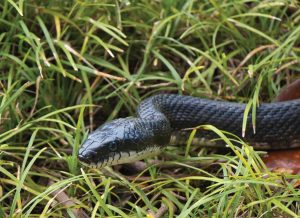As the calendar rolls into April, the first tiny scouts are crossing the northern Texas border and filtering into Oklahoma and Arkansas. Their mission is to find sustainable nectar and sugar feeders for the coming summer.
In Illinois, we must be prepared by mid-April to welcome the first tiny arrivals of a long migration. Many hummingbirds fly as many as 1,300 miles nonstop across the open ocean to arrive in the U.S. By the time they arrive, the small birds’ fat reserves are gone, and they desperately need food.
To assure having hummingbirds in your feeding area, have your feeders cleaned, filled and put out by mid-April. Southern Illinois may see the birds earlier in the month while central and northern Illinois can expect the birds to arrive April 16-30. Weather is the driving factor in the birds’ migration north with warm, sunny weather bringing the birds earlier.
A simple trick to increase the number of birds frequenting your yard is to put out more feeders. A friend of mine puts five or six large feeders out early in the spring and is rewarded with 50-75 hummingbirds at her feeders all summer long. Some days, she goes through almost a gallon of sugar water to keep her flock of busy buzzy birds well-fed.
Hummingbirds are territorial and fight over food sources, so remember to keep a good distance between multiple feeders. Hummingbird lovers who only put out a single feeder are deprived of a large number of birds, because one bird will ultimately dominate a single feeder and keep the others away.
Keeping the feeders clean is vital. Every 7-10 days, feeders should be taken down and thoroughly washed, rinsed and refilled. The formula for sugar water for the feeders is simple — four parts water to one part sugar. Boil the sugar water blend and allow it to completely cool before putting the feeder back out.
Leave the red dye and food coloring out. Dyes and coloration are unnecessary and may be harmful. The birds will locate the feeder just fine without artificial coloration.
Watching the aerial antics of hummingbirds is fascinating. Several years ago, I noticed a hummingbird hovering around an empty feeder. I washed, rinsed and refilled the feeder. As I walked back into the yard with the feeder, I noticed the hummingbird was still in the area, patiently awaiting a filled feeder.
As I walked up to the shepherd’s hook to hang the feeder, I wondered if I could just stand still, hold out the feeder at arm’s length and see if the hummingbird would come to the feeder. Sure enough, the little bird came right up and began to drink its fill.
I was mesmerized by the tiny creature hovering so close without fear. Unfortunately, I forgot the territorial instincts of the hummingbird clan, and a dominant male buzzed by within an inch of my right ear and dove under my arm to drive the other hummingbird away.
At the roar of the hummingbird’s wings in my ear, some ancient reaction for survival to take flight or fight possessed me as I imagined that I was being attacked by an 8-pound bumblebee. Screeching like a 3-year-old girl, I ran across the yard in leaps and bounds. Quickly regaining my composure, I immediately looked around to make sure none of my neighbors witnessed my cowardly response. Thankfully not.
Learn More
You can track hummingbird arrivals in Illinois and learn more about them. Here are two fantastic interactive websites.










